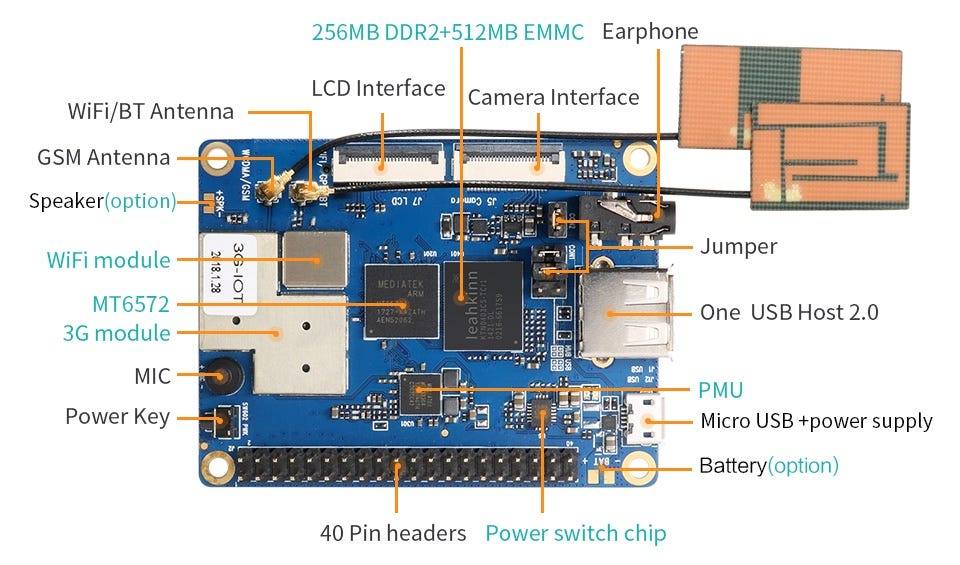A Cellphone, but Without the Box
The most obvious example of the peace dividend I’ve ever seen?
Over the course of the last few months, Orange Pi has released three cellular boards running Android intended to be used to build Internet of Things smart things; two slightly different 3G boards, and a 4G board.
It was Chris Anderson that coined the phrase “the peace dividend of the smartphone war” arguing that “…when giants battle, we all win,” and I’ve ended up talking about the idea a lot over the years. But I don’t think I’ve ever come across a more blatant example of how the smartphone wars has changed embedded computing for the better than these three boards from Orange Pi.


All three of these boards are essentially cellphone logic boards, but without a case, or at least in the first instance, a screen. However like a lot of Orange Pi boards, all three share a Raspberry Pi-esque form factor, and that now crucial 40-pin GPIO header, which has become the de facto standard in the single-board computer market over the last few years.


Both of the 3G boards ship with Android 4.4, while the newer 4G board comes with Android 6.0—although Android 8.1 is now available. On the down side, if you’re expecting Linux support for the boards you’re probably going to be disappointed. Based around the aging MediaTek MT6572 and MT6737 processors respectively, it’s likely that support isn’t going to be forthcoming anytime soon, especially given MediaTek’s traditional attitudes.
If you’re interested in picking them up, the lower specification 3G board is available on AliExpress for just $19.90 a piece plus shipping, while the higher specification 3G board is available for $24.90 plus shipping. The newer, and higher specification, 4G board is available at a correspondingly higher price, almost double the price of the 3G board, at $45 a piece plus shipping.

A 4.98-inch TFT touchscreen with 480×854 pixels is also available for use with the two 3G boards for $14.90 a piece plus shipping, and a slightly larger 5.5-inch TFT touchscreen with 540×960 pixels is available for the 4G board at $19.80 a piece plus shipping.
However, be warned. If you are thinking about picking these boards up, they aren’t easily usable out of the box. These aren’t a Raspberry Pi or BeagleBone-like board intended for the maker market.
Documentation, and especially software support, will be spotty and scarce, and you shouldn’t expect a large community to be around to help out if you run into problems. But they are cheap for what they are, so if you’re willing to accept that, they might well be of more than passing interest.
[h/t: CNX Soft]

